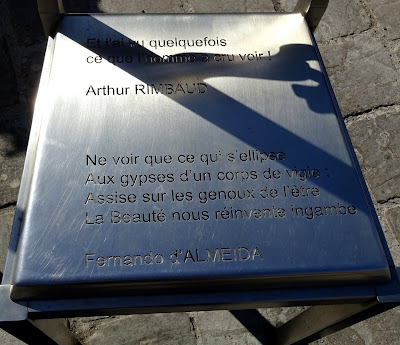'Versant intime' is a series of books, directed by Fabrice Lardreau, in which figures from the world of literature, the arts, sciences and travel speak about mountains, nature in general, their travels, and their relationship with the fragile beauty of the world: Lardreau himself is a journalist with La Montagne et Alpinisme along with being the author of ten novels and works of non-fiction. Here, in about the first two thirds of the book, Lardreau asks Marie-Hélène Lafon a number of questions.
Lafon was brought up on an isolated farm in the north of Cantal, her parents being peasant farmers who expected her to move away from the land because they realised that it was the end of the peasant farming industry. She describes her early life and her contact with the mountains and nature, and even though she is a transfuge, a former member of the peasant class now become an academic and a notable novelist, her previous experiences have moulded her, being something unforgettable: her novels have evident autobiographical elements, and she describes some of these.
She also describes her cultural experiences, the books and songs that shaped her life. Following the interviewing, Lafon includes a number of influential 'mountain' readings: Jean Ferrat's song La Montagne about people leaving the mountains, a song she saw as old-fashioned in her early teens, a song her mother liked, but which had an effect on her too; Julien Gracq's experiences of walking in the mountains near to where she lived; Jean Giono in the Auvergne rather than Provence; etc.
The most fascinating extract Lafon gives us here is from a collection called Vialatte à la montagne (published in 2011) in which Alexandre Vialatte (1901-71) speaks about Puy-de-Dôme. Lafon's parents used to buy the daily local paper La Montagne, which Lafon didn't read. Vialatte had a weekly column in the paper in which he may have written about mountains, or anything which took his fancy to write about. But even if he was writing about mountains, they may well have just been an excuse for him to digress. In the article Vialatte, in a remarkably amusing excuse for exaggerating the truth about the height of the Puy-de-Dôme, moves on to the Larousse encyclopaedia's mentioning Saint-Ferréol-sur-Arzon having a population of 2001. Vialatte points out that while the count was being made, Larousse forgot that the baker's wife had run off to Paris with the postman's brother-in-law, the butcher's wife had had twins, the sexton had died of cold, and the police sergeant had been eaten by a wolf. (Needless to say, Saint-Ferréol-sur-Arzon doesn't exist, but the reader gets a strong idea of Vialatte's humour.)
And the reader gets a strong idea of Marie-Hélène Lafon's psychology in this highly readable book. I shall be reading more of her work, although the Vialatte excerpt reminds me that I have a book of his his which contains many of his writings from La Montagne: I shall read that first.
Links to my Marie-Hélène Lafon posts:
––––––––––––––––––––––––––––––
Marie-Hélène Lafon: Le Pays d'en haut : entretiens avec Fabrice Lardreau
Marie-Hélène Lafon: Sur la photo
Marie-Hélène Lafon: Les Derniers indiens
Marie-Hélène Lafon: L'Annonce
































































